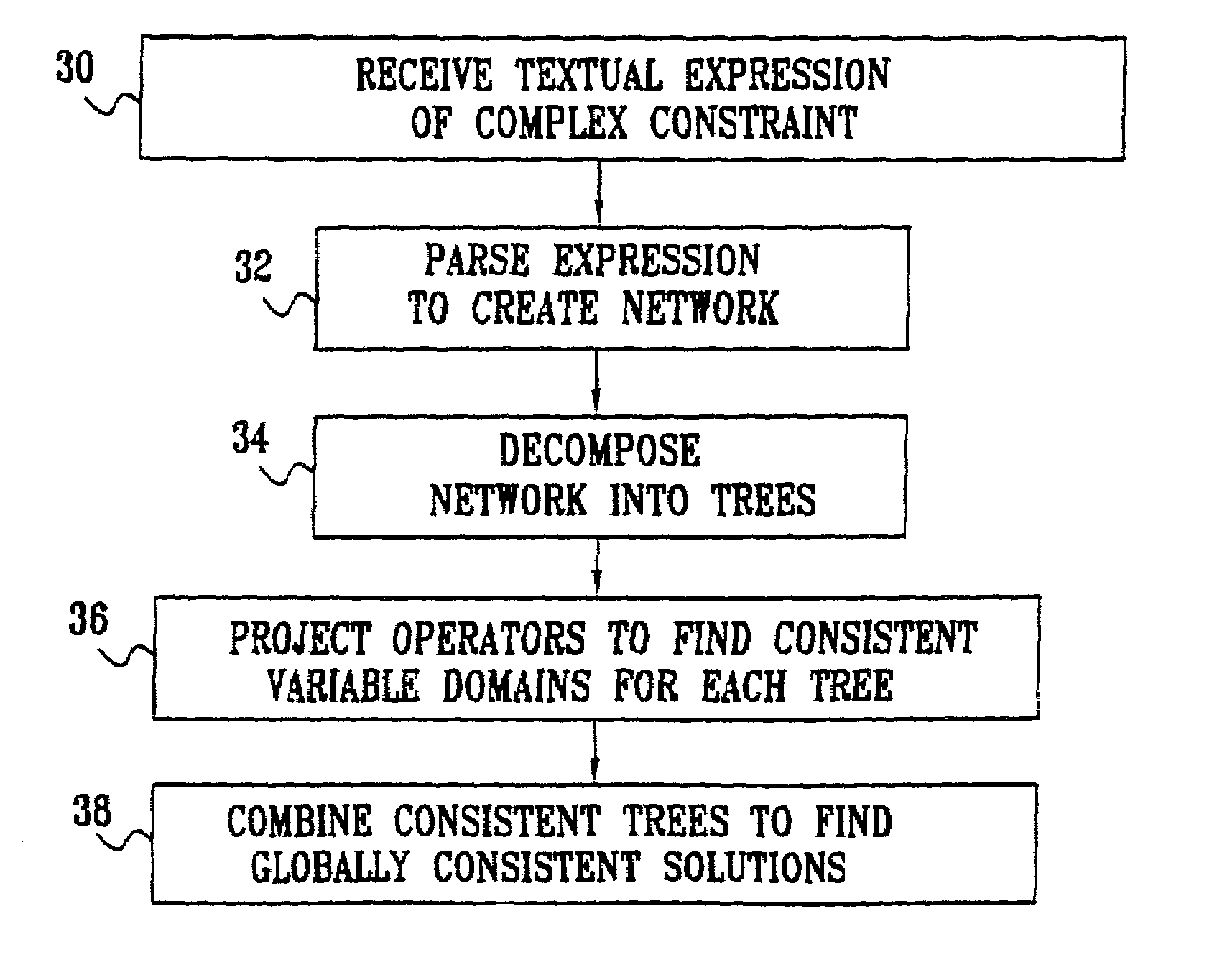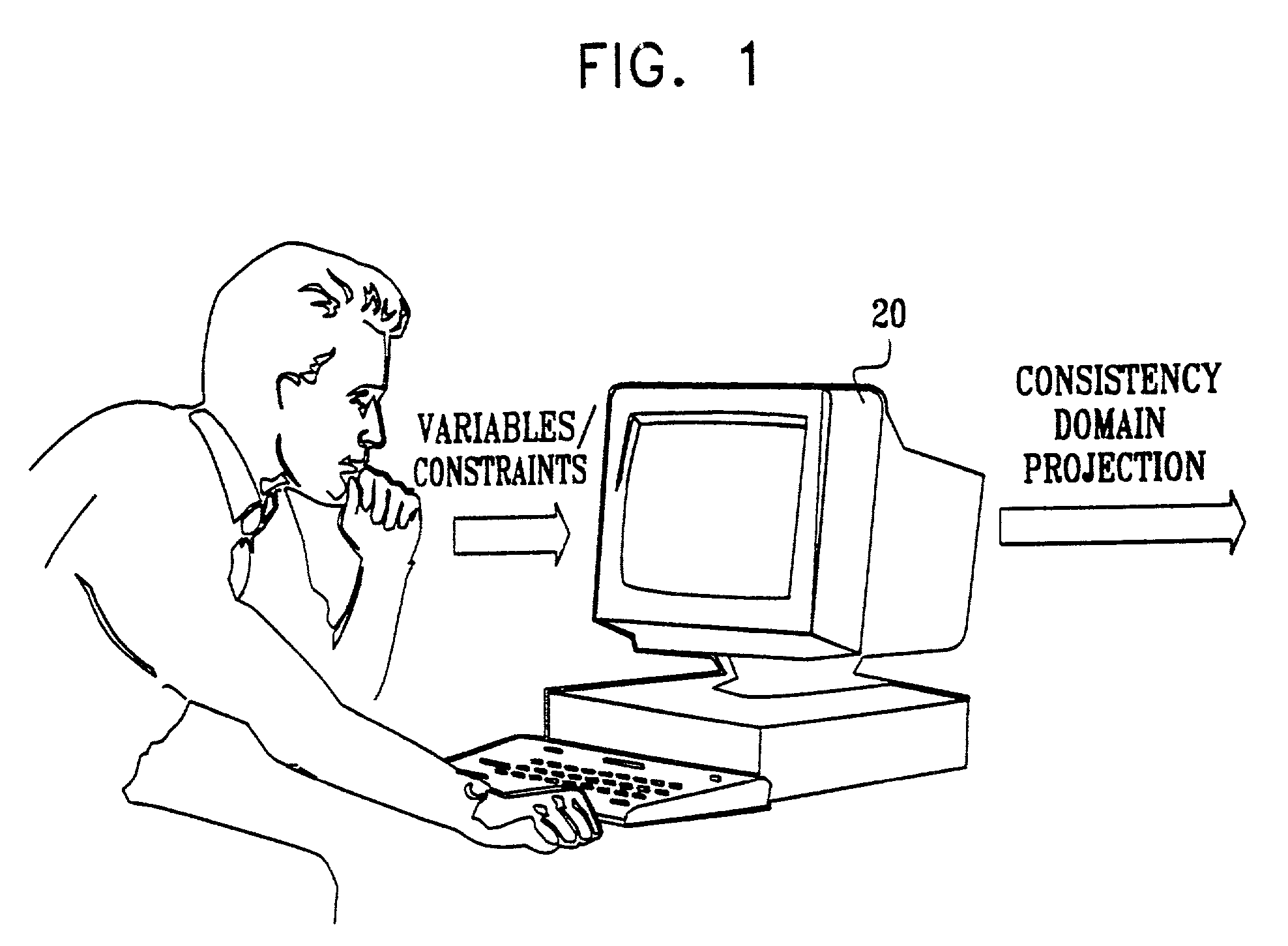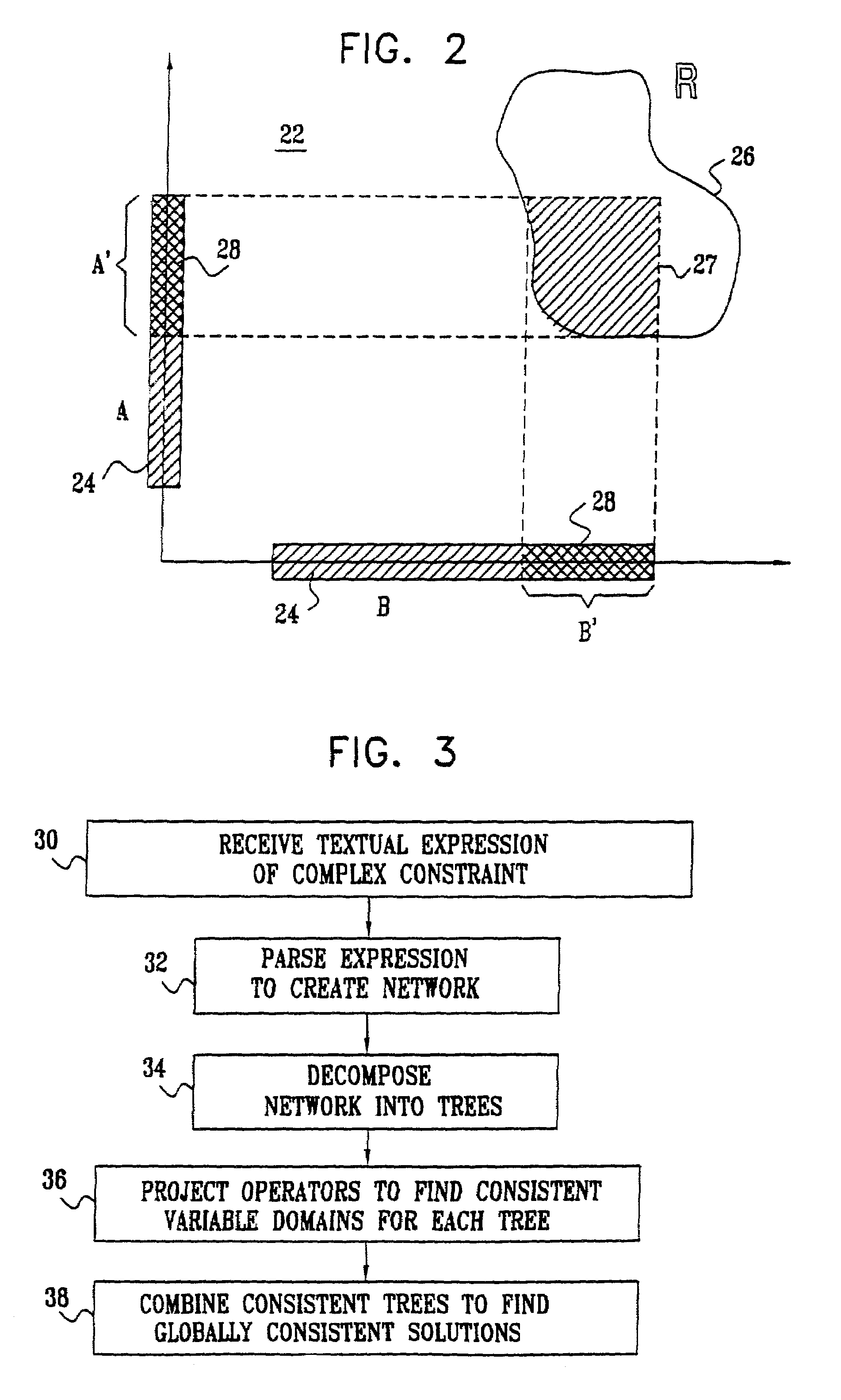Hyper-arc consistency in a contraint satisfaction network
a contraint and satisfaction network technology, applied in knowledge representation, instruments, computing models, etc., can solve the problems of limited solutions of this type, unary constraints, and excessive time-consuming exhaustive search for valid assignment of variables
- Summary
- Abstract
- Description
- Claims
- Application Information
AI Technical Summary
Benefits of technology
Problems solved by technology
Method used
Image
Examples
Embodiment Construction
[0073]FIG. 1 is a schematic pictorial illustration of a system 20 for solving constraint satisfaction problems, in accordance with a preferred embodiment of the present invention. The system receives a definition of a set of variables and a network of constraints to be applied to those variables, preferably in the form of input from a user of the system in a special operator grammar, as described below. The system then finds solutions to the constraint network, in the form of values of the variables that satisfy all of the constraints. For this purpose, the system uses methods of projecting the operators onto the domains of the variables while maintaining arc consistency. For each n-ary constraint, system 20 reduces the domains of the variables so that they hold only those values that may be part of some solution, as described in detail hereinbelow.
[0074]In a preferred embodiment of the present invention, by way of example, the variables comprise possible inputs to a hardware device...
PUM
 Login to View More
Login to View More Abstract
Description
Claims
Application Information
 Login to View More
Login to View More - R&D
- Intellectual Property
- Life Sciences
- Materials
- Tech Scout
- Unparalleled Data Quality
- Higher Quality Content
- 60% Fewer Hallucinations
Browse by: Latest US Patents, China's latest patents, Technical Efficacy Thesaurus, Application Domain, Technology Topic, Popular Technical Reports.
© 2025 PatSnap. All rights reserved.Legal|Privacy policy|Modern Slavery Act Transparency Statement|Sitemap|About US| Contact US: help@patsnap.com



